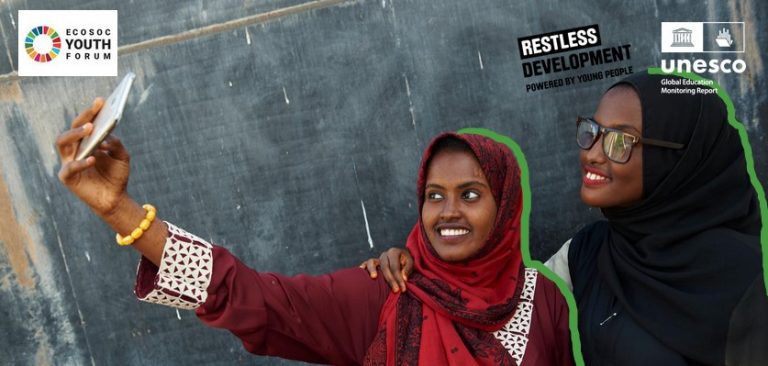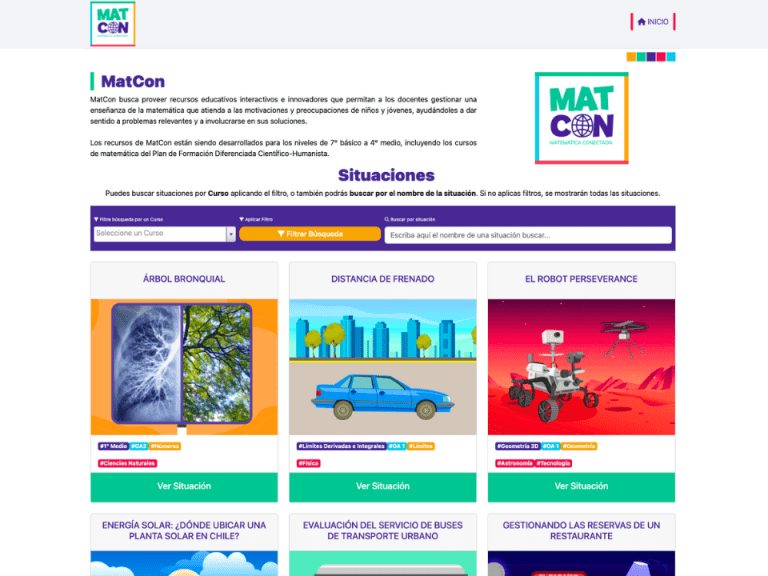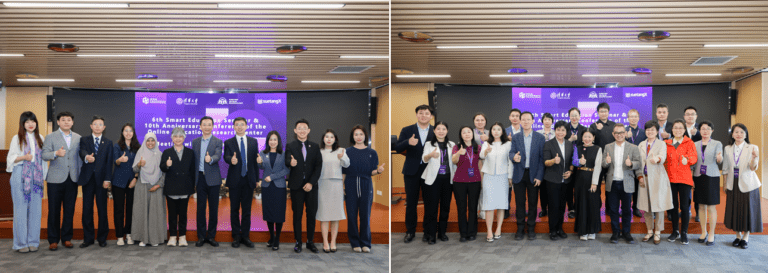Distinguished guests, ladies and gentlemen, Friends,
Good day to everyone!
Today, friends from all corners of the world gather in Shanghai to celebrate the grand event of digital education development. Chinese leaders and the government place high importance on the digitalization of education. President Xi Jinping noted that digital education is a critical breakthrough in creating new avenues and advantages in educational development. There’s a need to further advance digital education to support personalized learning and lifelong learning, expanding the coverage of quality educational resources, and modernizing education. Premier Li Qiang emphasized the need to grasp new opportunities in the latest technological and industrial revolutions, promoting the deep integration of digital technology and the real economy. Vice Premier Ding Xuexiang proposed strengthening digital innovation and application and accelerating digital transformation. These provide clear directives for the development of digital education in China.
Recently, Secretary Chen Jining and Vice Chairman Cai Dafeng graced the conference with their presence and speeches. They have high hopes for digital education in supporting the modernization of education, serving the all-round development of individuals, and contributing to high-quality economic and social development. In hosting the 2024 World Digital Education Conference, we focus on the theme of “Application, Sharing, Innovation”. We aim to embrace diverse wisdom, effectively build consensus, and jointly discuss, create, and share. Together, we will build a new engine for digital education, supporting and leading Chinese-style modernization and contributing to the United Nations 2030 Sustainable Development Goals.
Ladies and gentlemen, Friends,
A year ago, we gathered in Beijing, China, to launch a groundbreaking initiative for global cooperation, exchange, and collaborative development in digital education. Since then, a robust global consensus on digital education has been steadily emerging. Through my interactions with education ministers from various countries and my participation in international organization events, it has become evident digital education has become a focal topic. At the United Nations Educational, Scientific, and Cultural Organization’s 2030 Education High-Level Steering Committee meeting, China’s initiative to leverage digitalization to transform global education was widely acknowledged. Over the past year, countries have intensified their efforts in advancing digital education. Many have identified digitalization as a strategic task for educational development, launching related plans, initiatives, and actions, planning the establishment of national digital education platforms, and focusing on legal standards, data governance, and network security. The exploration of digital transformation in global education has gained momentum. Around the themes of precision teaching for teachers and personalized learning for students, countries have been actively connecting infrastructure, developing digital educational materials, innovating organizational forms, enhancing digital literacy, and exploring for mutual recognition of digital credits and degrees. Digital transformation is increasingly resembling a harmonious symphony in educational reform.
Ladies and gentlemen, Friends,
At the Beijing conference, we proposed a vision of digital education that is equitable, inclusive, high-quality, suitable for everyone, green, and open. This proposition received positive feedback and recognition from all parties. Over the past year, China has remained committed to the “3C” philosophy of “Connection, Content, and Cooperation”, exploring and advancing alongside other nations to deepen strategic actions in digital education, resulting in many milestone achievements.
We have gathered vast resources, significantly enhancing the supply of quality courses. The Chinese National Smart Education Platform covers various stages of education, including basic, vocational, and higher education, across multiple disciplines. The supply of quality resources continues to increase. Last October, I attended an “Agricultural Microbiology” class at Ningxia University in Northwest China. During the session, teachers and students interacted frequently within the smart system, quickly and precisely addressing knowledge gaps and experimental doubts, and greatly enhancing the classroom experience. This particular course garnered over 4.8 million online views. Currently, the resources hosted on the primary and secondary school platform have increased to 88,000, while the vocational education platform boasts over 10,000 high-quality online courses and the higher education platform features 27,000 quality MOOCs, continuing to lead in the development of global educational resources.
We have continuously promoted large-scale applications, significantly increasing the coverage of quality digital resources. With a focus on reducing regional disparities, we implemented the “MOOC Western Journey Plan 2.0”, providing 198,000 MOOCs and customized courses, serving 540 million student interactions in universities across western regions. In alignment with rural revitalization efforts, in 2023, we launched the first phase of the Digital Teaching Innovation Experiment, delivering 2,511 science and art lessons to 14,000 rural primary and secondary school students. Today, volunteers from East China Normal University in Shanghai can engage with students from Xundi County, Yunnan Province, thousands of miles away, to experience traditional culture, explore the forefront of technology, and share their thoughts through the platform. Digital education is breaking down barriers of time and space, connecting urban and rural areas, traversing geographical boundaries, and using educational equity to promote social justice.
We have been advancing data integration and sharing, significantly improving public services. By actively expanding service areas, optimizing user experience, and enhancing service quality, our platform now offers over 30 services such as college entrance exams, academic degrees, and studying-abroad assistance, with a cumulative processing volume of over 80 million cases. It has also actively supported university students in their employment and entrepreneurial efforts, posting 17.55 million job positions in the past year, with nearly one-third of college graduates finding jobs through the platform. Teacher training activities on the platform have reached over 40 million participants, serving as a valuable resource for teachers’ professional development. At the affiliated primary school of the Normal College in Chongzuo City, Guangxi Zhuang Autonomous Region, teachers leverage resources from esteemed educators in Beijing, Shanghai, and Tianjin for collaborative lesson preparation and online teaching research. This approach has accelerated their professional growth and revitalized the distinctively Chinese teaching research system.
We have actively expanded cooperation and exchanges, significantly enhancing China’s contribution to global digital education. By hosting international conferences on artificial intelligence and education, world MOOCs and online education, and international seminars on “Digital Transformation Reshaping Lifelong Learning for All”, we have made strides in pioneering the field of education. The level and scope of international cooperation in digital education have continued to improve, and communication, exchange, and dialogue have accelerated. Last year, UNESCO recognized the Chinese National Smart Education Platform with the Education Informatization Award and decided to establish an International STEM Education Research Institute in Shanghai. This is not only a high recognition of China’s achievements in digital education by the international community, but also a new opportunity for global cooperation in this domain.
Ladies and gentlemen, Friends,
In today’s world characterized by accelerating technological and industrial revolutions, rapid knowledge innovation, and the fast-paced transition from discovery to invention, education faces both new challenges and opportunities. Every country is contemplating the epochal question of “where education is headed”. The advantages digital education brings forth, such as equity, inclusiveness, openness, and sharing, provide new paths for how education can better serve modernization and foster the holistic development of individuals, opening the door of hope.
This door of hope leads to the millennia-old dream of nurturing a global community. From over two thousand years ago, when Confucius in China advocated for education without discrimination, and Socrates in Greece envisioned an education combining arts, beauty, and reason, to more recently, when the United Nations’ Declaration of Human Rights upholds the right to education for all, the dream of equitable and high-quality education resonates across time and cultures. Digital education can transcend the constraints of time and space, allowing people from different countries, regions, and living conditions to equally access educational resources and learning opportunities. It can harness the unique advantages of technology to shift education from mass standardization to mass personalization, allowing each student to have an educational plan tailored to their needs and achieve free and comprehensive development.
This door of hope unveils boundless possibilities for lifelong learning. The ancient Chinese saying, “Be renewed daily, be renewed daily, and be renewed again daily”, reflects humanity’s enduring pursuit of higher realms and new goals. In the digital age, with rapid knowledge innovation, society members need to acquire new qualities for learning, new skills for work, and new competencies for interaction. Digital education is poised to drive systemic changes in educational concepts, methods, and models, reshaping school teaching formats, creating always-online classrooms, and building intelligent, ubiquitous future schools. It will cultivate a learning society where “everyone learns, at all times, everywhere”, empowering learners to better navigate future challenges.
This door of hope leads to the vast ocean of digital civilization. Currently, digital technology is integrating into all aspects of human economic, political, cultural, social, and ecological realms, introducing new concepts, forms, and models, and bringing extensive and profound impacts on human production and life. Digital civilization is becoming an increasingly integral part of the evolving human civilization. The development of digital education can cultivate modern talents adapted to and leading in the digital age and promote cross-layer, cross-border, and cross-cultural learning exchanges, enhancing mutual understanding among people and continuously advancing human civilization towards openness, inclusiveness, and harmonious coexistence.
This door of hope opens to a beautiful world with a shared future for humanity. Education stands as a common interest and a shared endeavor for the global community. The development of digital education will facilitate the flow and convergence of diverse high-quality educational resources globally, allowing the digital transformation of education to benefit all learners and contribute to the betterment of humanity. It will continuously break down national barriers, bridge inequalities, and foster close connections among peoples worldwide, writing a new chapter in the narrative of human community with a shared future.
Ladies and gentlemen, Friends,
The door of hope has been unlocked, and the advancement of civilization necessitates joint efforts of all countries. Today, China is advancing the development of a powerful nation and the great rejuvenation of the Chinese nation through Chinese-style modernization at all fronts. With rich technological expertise, diverse application scenarios, massive educational data resources, and a strong demand for lifelong learning, China can capitalize on immense opportunities for the digital transformation and high-quality development of education, and the building of a learning society. As China’s national strategy for digital education enters its third year, we are transitioning from the “3C” philosophy of “Connection, Content, and Cooperation” to an “3I” approach of “Integration, Intelligence, and Internationalization”. We aim to prioritize application-oriented services, expand the sharing of quality resources, and promote educational reform and innovation. We will position Chinese digital education as a practical platform to implement the Global Development Initiative, the Global Security Initiative, and the Global Civilization Initiative, providing effective options for the development and transformation of global digital education.
First, we will conduct large-scale application demonstrations to amplify service efficiency. Application is the touchstone for testing the effectiveness of digital education, and the ultimate measure of success lies in the praise from teachers, students, and society at large. We will deepen ongoing digital education pilot programs, by selecting provinces, cities, counties, and regions in central and western areas with urgent needs and proper conditions to facilitate the nationwide application of the national platform. Our goal is to expand the coverage of quality resources and transform pilots into exemplars. We will also guide classroom teaching to deepen application, encouraging all levels and types of schools to integrate platform resources and services into their educational practices. We will enrich students’ extracurricular activities with digital educational resources, to support the development of their interests and hobbies and ensure the value of quality digital resources shines through. Additionally, we will support lifelong learning by operating lifelong and elderly learning platforms, launching and enhancing “Social School” resources, and helping social learners update their knowledge and improve their technical skills in various forms, across various stages of life, thereby building a society of lifelong learning for all. Furthermore, we will innovate policies and mechanisms to promote application, guided by the principle that “Effective utilization is true proficiency, and indispensability is essential”. Through thematic teacher training, model case selection, assessment incentives, and evaluation reforms, we aim to make platform usage a habit for both teachers and students. Of course, the unknowns in digital education far exceed the knowns, and we are committed to conducting more work and further application explorations in this field.
Second, we will develop and converge resources of higher quality to strengthen the national platform. As an ancient Chinese saying goes, “With the wisdom of the masses, nothing is impossible. With the strength of the masses, nothing is invincible.” The importance of converging and integrating resources has underpinned our past successes, and we will continue to uphold this principle, constantly drawing on domestic and overseas high-quality resources. We will focus on expanding resource supply through various means, including contributions by teachers and students, independent school initiatives, and government-wide collection efforts, with an emphasis on courses in STEM education, information technology, arts education, and vocational skills. By stringing these scattered pearls, we strive to expand the overall resource pool on the platform. In addition, we will enrich resource formats, by developing digital textbooks, extensively collecting teaching aids, lesson plans, courseware, teaching designs, virtual simulation experiment resources, and integrating digital education tools such as intelligent homework, interactive classrooms, online teaching research, assisted grading, and teaching evaluation. We will also innovate resource evaluation, using the massive and dynamic data aggregated by the National Education Big Data Center. Through analyzing and evaluating the scale, structure, content, and efficacy of platform resources, this approach will promote the full lifecycle management of resource development, storage, updating, and removal. Moreover, we will continue to strengthen the Chinese National Smart Education Platform, building a platform system that expands horizontally and connects vertically and making it the best platform for harnessing collective wisdom from across the country and around the world.
Third, we will develop digital technology more intelligently to serve the holistic development of individuals. Intelligence is an important engine for educational reform, creating limitless possibilities for integrating scientific and cultural education to support the all-round development of individuals. To realize this vision, we will implement actions empowered by artificial intelligence, promoting the deep integration of intelligent technology with both education (AI for education) and scientific research (AI for Science). We will also actively promote “intelligence-assisted learning”, developing intelligent learning companions and implementing intelligent tutoring systems, in order to continuously improve students’ scientific and humanistic literacy, empowering each student to reach their full potential. Likewise, “intelligence-assisted teaching” will be promoted, to develop intelligent teaching assistants in support of lesson preparation, workload reduction and efficiency enhancement for teachers, thereby allowing teachers more energy for creative teaching activities. Meanwhile, “intelligence-assisted management” will be adopted, to develop intelligent tools for population prediction, resource allocation, and decision-making support and elevate the modernization level of the education governance system and enhance governance capabilities. “Intelligence-assisted research” will be conducted, leveraging simulation computing, data mining, and other methods to establish a data-driven new research paradigm and continuously deepen the understanding of regularities. At the same time, we will adhere to the principle of “digital for good”, reinforcing research on artificial intelligence and digital ethics, scientifically assessing the impacts of intelligent technology on education, and actively guiding the rational application of intelligent technology, to ensure that technological progress benefits teachers and students.
Fourth, we will engage in higher-level international exchanges to build a global platform for digital education cooperation. The rapid development of digital technology has greatly expanded the space-time field, forging unprecedented connections in human life. We will deepen international cooperation in digital education guide by the principle of “five ones”: one platform, one conference, one alliance, one journal, and one series of exemplary cases. By launching the international version of the Smart Education Platform, we will provide international information, course resources, and studying-abroad services to learners worldwide, thus creating high-quality global public products. We will host the World Digital Education Conference, innovating hosting methods and continuously enriching its content to establish a high-level platform for dialogue and exchange. We will leverage the role of the Digital Education Alliance to promote bilateral and multilateral exchanges in digital education, cooperating in areas such as credit recognition, standard interoperability, and experience sharing. We will establish an international journal of digital education, setting up an international testing ground for digital education. This initiative aims to promote cutting-edge research in fields such as STEM education and digitalization, artificial intelligence and education, digitalization and the learning society. We will also release the Global Digital Education Development Index and demonstration cases, to lead digital education development on a global scale. We therefore call on all stakeholders to strengthen bilateral and multilateral cooperation in infrastructure construction, quality resource openness, platform construction and application, and policy and standard alignment. Together, we can jointly promote digital education development, and contribute to the development of a community with a shared future for humanity.
Ladies and gentlemen, Friends,
Looking to the future, each of us is filled with anticipation. Let us transcend national barriers with applications, surpass conceptual differences with sharing, and break through the shackles of thinking with innovation. By opening the path of transformation with the door of hope, illuminating the way forward with the light of digital technology, and nurturing the foundation of happiness with the power of education, we will give everyone the drive and opportunity for holistic development. In response to this anticipation, we will walk alongside the world and conforming to the tide of educational reform in the digital age, jointly building a global community for digital education development and ensuring that digital technology benefits the people of all countries more equitably and effectively.
Ladies and gentlemen, Friends,
Going alone may be fast, but going together leads us farther. By breaking down barriers, eliminating estrangement, and creating an open, cooperative, and trusting environment for digital education development, we can enable people worldwide to share the achievements of digital civilization. This, is our common responsibility. I believe that as long as we join hands and move forward together, we can expedite the digital transformation of global education, foster intelligent upgrading and green development, and jointly create a brighter future for humanity.
Thank you all!






